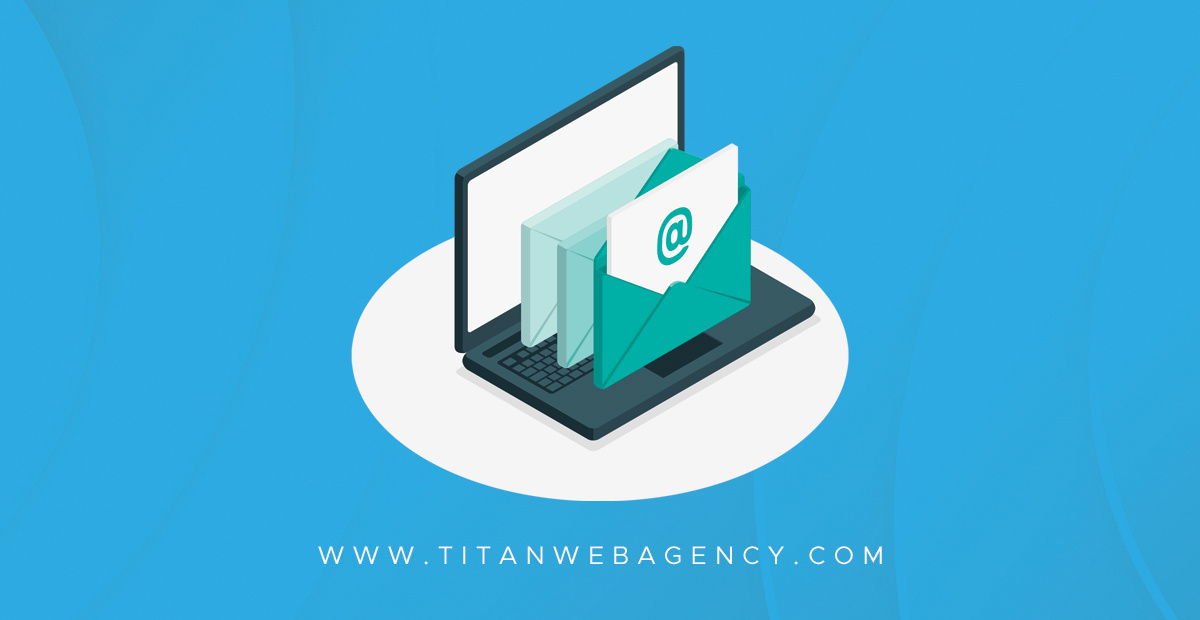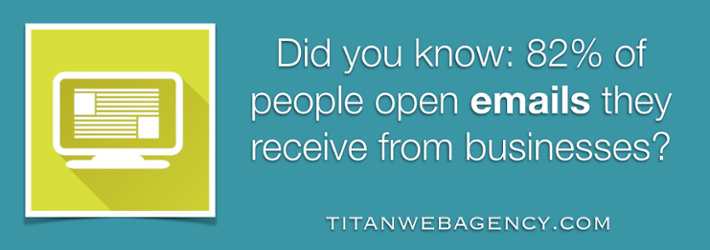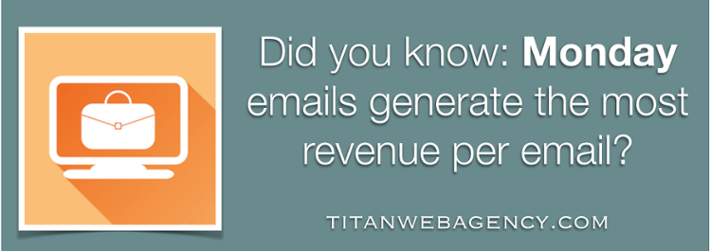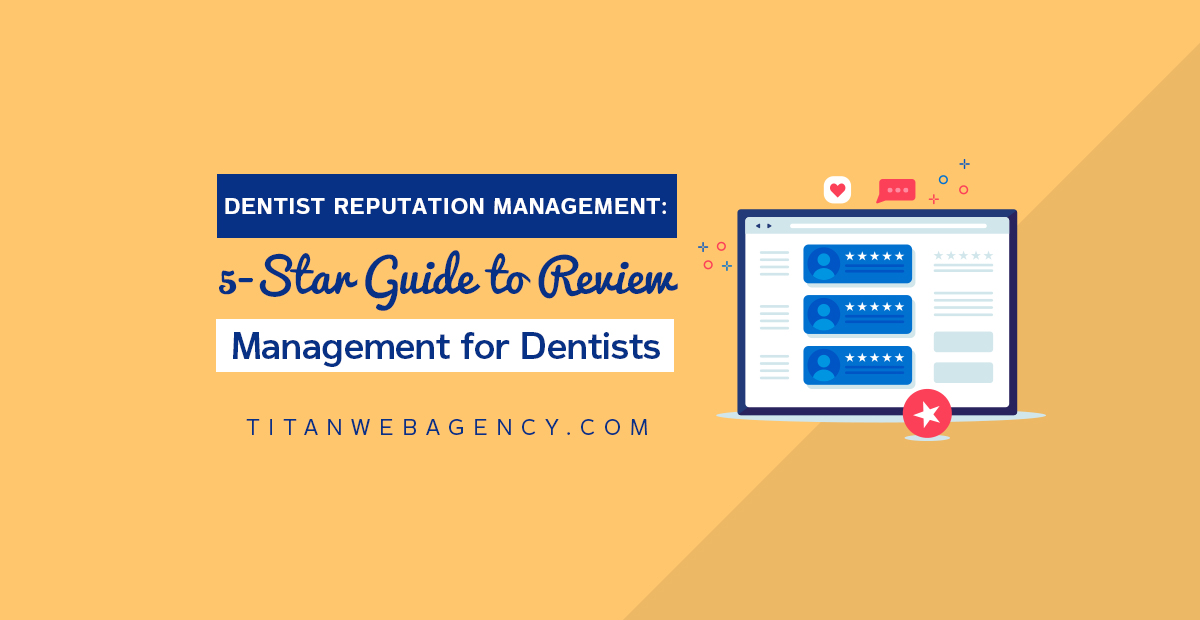Email Marketing for Dentists: An In-Depth Look at Strategies for Dentists

*This blog post was originally published Oct. 17, 2014, and extensively updated May 11, 2020.
Key Takeaways: Email Marketing for Dentists
- Proven Value and ROI: Email marketing consistently delivers one of the highest returns in dental marketing, offering a low cost per lead and strong patient retention when campaigns are well-targeted and consistent.
- Patient Relationship Building: Regular communication through newsletters, appointment reminders, and educational emails builds trust, keeps your practice top-of-mind, and increases recall appointments.
- Campaign Diversity: Successful dental practices leverage multiple email types — from appointment reminders and educational digests to promotional and lead-nurturing sequences — ensuring communication remains relevant and personalized.
- Content That Converts: Clear calls-to-action, valuable patient-focused content, mobile-friendly formatting, and HIPAA-compliant execution are essential to improving engagement and maintaining professional credibility.
- Tracking and Optimization: Monitoring metrics such as open rates, click-through rates, list growth, and conversions allows you to refine performance and improve ROI over time.
- Integration with Broader Marketing: Coordinating email campaigns with social media, PPC, and patient review efforts amplifies overall marketing effectiveness and ensures consistent messaging across every channel.
Email marketing remains one of the most cost-effective and relationship-driven strategies for dental practices looking to retain patients, generate referrals, and grow consistently. This guide covers the main benefits, campaign types, performance metrics, and practical tactics for building a compliant, high-ROI email strategy tailored for dentistry. Below are the key takeaways to help you strengthen your patient communication and results:
An Introduction to Dental Email Marketing
Growing a dental practice isn’t an easy feat. While some patients prioritize dental care, others only see a dentist when they need to. To keep your practice profitable, you’ve got to find ways to attract new patients and keep your existing patients engaged and making appointments.
At Titan Web Agency, one of the most common questions we hear is this:
Is email marketing for dentists a good investment?
The short answer is yes. Email marketing might not be the newest and shiniest tool in your marketing mix, but it’s reliable and effective. We’ve created this guide to introduce you to the benefits of dental email marketing.
We'll go over some email marketing campaign ideas, including follow-up emails, cost-effective email marketing platforms, and more.
1. Reasons for Dentists to Use Email Marketing
Selecting the right marketing mix is crucial if you want to expand your dental practice. Here are some of the reasons that we recommend dental practice email marketing.
Dental Email Marketing is Cost-Efficient
Marketing can be expensive, especially if you’re bidding on popular and competitive keywords. However, dental email marketing is one of the most affordable methods for keeping in touch with your patients and expanding your practice.
Research shows that email marketing is easier, less expensive, and more effective than social media marketing. You can send thousands of emails a month and pay only pennies for each, even if you use an email marketing service to run your campaigns.
Email Marketing Can Help You Grow Your Practice
Unless you’re in an extremely rural area, you’re competing with other dentists for the attention and patronage of your patients. Email marketing for dentists provides a way to attract new patients without blowing through your marketing budget.
Emails have an open rate that far outpaces the percentage of followers who will see your posts on Facebook or Twitter – about 21.72% for dental email marketing. That means your emails will be seen by your existing patients and may be forwarded to their friends and family members – providing a way for you to expand your reach and increase your profits.
Keeps Your Patients Updated with New Services and Promotions
In addition to helping you attract new patients to your practice, dental email marketing can help you inform your existing patients of new services you’re offering and promotions you’re running.
For example, if you’ve recently added new tooth whitening procedures, you can tell your patients about the service and offer them a coupon or promotion to entice them to try it.
You can also use dental email marketing to build a referral program and encourage your patients to refer their friends and family to you.
Helps to Build Strong Patient Relationships and Increase Loyalty
Did you know that 80% of marketers rely on email marketing to retain customers? And 56% say that email is the best way to increase customer retention and profits.
It’s common for dentists to focus on acquiring new patients, but patient retention can make a huge difference in your bottom line. The average lifetime value of a dental patient is between $12,000 and $15,000. When you consider that most new patients will start with a cleaning, it’s clear that retaining patients is the best way to ensure the success of your practice.
Great Way to Ask for Reviews
You probably already know that getting your patients to leave online reviews of your dental practice is a must. Research shows that 91% of young people – in other words, the patients with the highest potential lifetime value – trust online reviews.
When you use dental email marketing to build trust with your patients, it becomes easy to ask them for reviews. This ensures that new patients who decide to visit your practice will have the social proof they need to feel confident about choosing you over your competitors.
Bottom line, email marketing works!
2. Types of Email Marketing for Dentists
Email marketing for dental practices can take many different forms, each with its advantages and disadvantages. You may want to utilize all of these at times, depending on your marketing goals and budget.
Email Newsletter/Digest
Email newsletters are typically sent once a month, and they’re the perfect way to keep your subscribers informed about what’s happening at your dental practice. Your newsletter may contain original material, links to recent blog posts, videos, and even promotions.
An email digest is easier to assemble than a newsletter. It usually consists of a compilation of links to recent blog posts and social media posts. In other words, it’s a way for your subscribers to catch up on any content they might have missed.
Advantages:
- Build brand awareness and patient loyalty
- Generate additional traffic for content on your dental website and social media pages
- Include diverse types of content
Disadvantages:
- Newsletters can be time-consuming to design
- Diluted call-to-action

Generating a quality newsletter requires an auto email responder software to send it out. Sometimes your practice management system will allow you to do this; if not, you’ll want to consider the following options: AWeber, Mailchimp, Constant Contact
Appointment Reminder
One of the most popular uses of email marketing for dentists is sending appointment reminders to patients. Reminders can help to reduce cancellations and no-shows, both of which can cost your practice money.
You can choose the intervals at which to send your appointment reminders. A common practice is to send one reminder a week before the scheduled appointment and another 24 hours before the appointment. You can include a “Confirm Appointment” call to action for patients to use.
Hopefully, you’re already using this method to remind your patients (or via text message). If your practice management system doesn't have this feature, then be sure to check out our post, The Best Dental Practice Management Software Reviewed.
Advantages:
- High click-through rate, or CTR
- Reduces patient cancellations and no-shows
Disadvantages:
- Limited marketing value
Dedicated Email
Dedicated emails are promotional emails that highlight a single promotion or offer, encouraging people to take advantage of the offer and schedule an appointment. An example of a dedicated dental marketing email would be an offer for a free whitening procedure.
It’s not a good idea to inundate the people on your list with dedicated emails, but sending them every once in a while is a good way to convince dormant patients to visit you again – or get active patients to try a new service.
Advantages:
- Quick to create
- Focused call-to-action
- Easy to track results
Disadvantages:
- May be mistaken for spam
- Can only be used sporadically
Lead Nurturing
Lead nurturing emails share some similarities with dedicated emails, but they are sent exclusively to prospective patients, rather than to existing patients. The goal is to inform readers about your practice and convince them to make their first appointment with you.
Nurturing emails are typically sent in sequences that are carefully timed to convert. They are usually attached to a specific offer, such as a free cleaning or a free consultation.
Advantages:
- Improve the timeliness of your email campaigns
- Targeted emails tend to get the best results
- Can use automation to manage the timing of emails
Disadvantages:
- You’ll have a smaller audience than you would if you sent emails to your whole list
- Sometimes dental practices “set and forget” automated emails and they may not be tracked as carefully as other emails
Sponsorship Email
Sponsorship emails are emails that you pay to send to a new audience. They may be part of a cross-promotion with another local business. Because the payment for sponsorship is in addition to the regular cost of email marketing, some dental practices are reluctant to try it.
Advantages:
- Reach out to a new list of highly targeted leads
- Easy to calculate the exact ROI of your campaign
Disadvantages:
- More expensive than traditional email marketing
- Only suitable for attracting new patients
We suggest choosing your email marketing goals first and then selecting the type of email marketing that will best help you achieve them.
3. General Email Marketing Statistics
Email marketing is effective, but we don’t expect you to take our word for it. Here are some general email marketing statistics to help you understand the potential benefits of dental email marketing.
Business and Marketer Trends
Let’s start with some numbers that illustrate the most important trends in email marketing across all industries.
- 67% of all email marketers say that increasing engagement is their top priority.
- 41% of all emails are opened on mobile devices.
- 42.3% of all Americans report subscribing to business email lists to receive special deals and promotions.
- Consumers spend an average of 2.5 hours per day checking their personal email.

Professional marketers continue to consider email marketing one of the most effective ways to enhance brand recognition and drive business growth.
Subscriber Stats
- 82% of people open emails they receive from businesses.
- 33% of email recipients decide whether to open a marketing email based only on the subject line.
- 44% of marketing email recipients have purchased in the last year as a result of a promotional email.
- 69.7% of U.S. internet users prefer to communicate with businesses via email (vs. other methods of communication).
- 44% of marketing email recipients have purchased in the last year as a result of a promotional email.
CTR and ROI Statistics

You may be wondering how big of a response you can expect to get from your dental email marketing campaigns. Here are some statistics related to click-through rates (CTR) and return on investment (ROI).
- Including a call to action in your email can increase click-throughs by 28%.
- Emails with video get a 300% higher click-through rate.
- Email earns $44 for every $1 spent, which works out to a 4400% ROI.
- 320% more revenue is earned from automated emails than from non-automated emails.
- Email is 40 times more effective at attracting new customers than Facebook and Twitter combined.
You can see from these statistics that email marketing is extremely effective and yields a very high ROI, which means you’ll receive an excellent return on the investment you make.
Statistics on Email Marketing for Dentists & Orthodontists
We already told you that the average open rate for dental practice emails is 21.72%. Here are some other email marketing statistics for dentists and orthodontists.
- Only about 20% of dental practices use email marketing. (37% say they have plans to increase their email marketing.)
- 55% of dentists and orthodontists who engage in email marketing send emails once a month.
- 7 out of 10 emails sent by dentists combine information with a promotion.
- Most dental email list subscribers are patients – about 68%, which is higher than in other industries.
- 53% of all dental and orthodontic practices have fewer than 500 subscribers on their email list.
- 76% of dentists do not segment their lists, sending identical emails to every subscriber. (In some cases, segmentation is not appropriate under HIPAA – see below for more information.)
- Only 19% of dental clinic owners track the results of their email campaigns.
The key takeaway here is that utilizing email marketing can give you a competitive advantage over your competitors. The key is knowing how to use and track your results to fine-tune your campaigns.
4. Dental Marketing Ideas for Email Campaigns
For some dental practices, the lack of email marketing is due to uncertainty about how to utilize dental email marketing effectively. Here are some dental marketing ideas to help you.
Focus on Your Subject Line
Your email subject line is the first thing your subscribers will see – and it may determine whether they open the email. Here are some guidelines to keep in mind.
- Your subject line should be an accurate reflection of the email’s content. In other words, don’t use ‘coupon’ in the subject if there’s no coupon in the email.
- Emails with emojis in them have a 56% higher open rate than emails with no emojis.
- Avoid using ALL CAPS or unnecessary punctuation, which may annoy your readers.
- Try out a variety of subject lines to determine which are the most effective.
Temper Your Mailings
One of the most common mistakes dental practices make is overdoing their dental email marketing campaigns. By that, we mean sending too many emails to the point where they become a nuisance.
Nobody wants to hear from their dentist every day. While there may be circumstances (such as a lead nurturing sequence) where you want to send more frequent emails, typically one or two emails per month are enough to engage your patients.
As we noted earlier, you should also keep direct sales and promotional emails to a minimum. If you plan to send two emails a month, only one should be a direct promotion.
Concentrate Your Content
Another common email marketing mistake we see from dental practices is sending emails that are too long or lack focus.
Research shows that 41% of all emails are read on mobile devices. In most cases, that means the reader is skimming the content. Nobody wants to get a novel-length email from their dentist.
When you write a marketing email, pare the content down to its most essential information. Then, make sure to include images and plenty of white space to make it easy to read.
State Your Case with Specificity
Today’s dental patients are savvy, and they know an overblown claim when they read one. One of the most effective ways to address your subscribers’ doubts about your claims is to be specific.
For example:
- Instead of ‘many satisfied patients, ’ say ‘over 100 satisfied patients’ have tried a new treatment.
- Link out to authority sites when necessary. The Journal of the American Dental Association is a good example.
- Include first-person patient testimonials as social proof.
When you back your statements up with specific data, your emails will sound authoritative, and patients will trust the content you send them.
HIPAA Compliant Email Marketing for Dentists
An important consideration for dental practice email marketing is compliance with HIPAA regulations. As you know, HIPAA protects certain patient information, and dental practices that fail to comply with regulations may be subject to fines.
Here are some key considerations for HIPAA-compliant email marketing for dentists.
- All emails sent to existing patients should be encrypted.
- Your list may not be segmented in any way that reveals a patient's Protected Health Information. This means you should not include the patient’s name in the subject line, or segment your list according to treatment types, medications, or any other information that might compromise a patient’s privacy.
- Keep your email communications above board. When you ask patients to sign up for your list, make it clear that they’ll be getting regular emails from you.
- Make it easy to unsubscribe from your list.
- Use a HIPAA-compliant email solution. Any reputable dental practice management software is HIPAA compliant, and many also include email automation features. If you choose to partner with an outside company, it’s your responsibility to make sure a signed Business Associate Agreement (BAA) is in place.
Protecting your patients’ privacy should be your priority whenever you send a marketing email. If you keep that in mind, you won’t need to worry about non-compliance.
Make CTAs Clear and Concise
Every dental marketing email you send should include a clear and concise call to action. By this, we mean that:
- Patients should understand that you want them to click the call to action.
- They should understand what will happen when they click.
Here are a few examples. If you want patients to leave a review, the call to action might say “Click Here to Leave a Review,” and the link should lead to your page on a reputable review site. If you want patients to book an appointment, the CTA should say “Book an Appointment” or something similar and direct people who click to your booking page.
Your subscribers are far more likely to take the desired action if you include a specific, clear call to action.
Provide Content That Is Valuable and Shareable
Just as there are goals associated with redesigning your dental website or improving your dental SEO, there are goals for email marketing, too.
One goal that’s worth pursuing is getting your subscribers to share your content with their friends and family. You can do that by including content that provides immediate and obvious value to your subscribers.
A dry email about a dental procedure is unlikely to be shared. Instead, try including:
- A colorful infographic
- An entertaining video
- Before and after photos
Visual content is more likely to be shared than plain text. Keeping shareability in mind will help you expand your reach without increasing your spending.
Tie in Social Media
You already know that social media provides a good way to connect with your followers, increase their engagement, and turn them into lifelong and loyal patients. One way to maximize the effectiveness of your dental email marketing is to integrate your social media accounts with your email. Here are some suggestions.
- Include social media follow buttons in your emails.
- If you want subscribers to leave comments or reviews, include a direct link to your Facebook review page or Instagram post.
- Use a plugin to allow readers to click to Tweet key points or statistics from your emails.
There’s no reason your marketing emails can’t also be a way for you to grow your social media following.
Optimize Campaigns for Mobile Devices
We already told you that more emails are opened on mobile devices than on computers. That means that optimizing your email marketing campaigns for mobile devices is a must. Here are some pointers.
- Keep your subject lines under 35 characters. While people who read on a computer will be able to see up to 60 characters, most mobile devices top out at 35 characters.
- Make sure your text is easy to read. In most cases, using a default font and size will suffice. Otherwise, use a 22-point font for the subject line and a 14-point font for the body of the email. Likewise, use only web-safe fonts that will be readable on most devices.
- Keep your email content in a single column, so subscribers aren’t required to scroll horizontally to read.
- Include alt tags for your images.
- Make your call to action a button. It will be easy to click where a hyperlink may not be.
It’s safe to assume that most of your readers will see your email on a mobile device. That means that mobile optimization is a must.
5. Some Important Dental Email Marketing Metrics to Track
Once you begin to use email marketing for your dental practice, it’s important to track your results. That way, you can calculate your ROI and adjust your campaigns as needed. Here are the most important metrics to consider.
Bounce Rate
Your bounce rate tells you how many of the emails you send cannot be delivered. There are two types of bounces:
- A soft bounce is due to a temporary issue. Examples include the recipient’s server being down or the email inbox being full.
- A hard bounce indicates that an email address is invalid.
The best way to avoid soft bounces is to review the most popular email providers and ensure that you’re following their best practices.
Any “hard bounce” emails should be deleted from your list. You can have your staff attempt to contact existing patients for an updated email address if you choose, but keeping invalid emails on your list will only hurt you. Most automated email providers charge based on the size of your list.
The Bottom Line: As a rule, you should have a bounce rate that’s 5% or lower. If it’s higher, you may need to implement best practices in your emails to minimize bounce.
b. List Growth Rate
Your list growth rate is an indication of how quickly you are adding new subscribers to your list. You can calculate your list growth rate by subtracting hard bounces and unsubscribes from your total new subscribers. Then, divide that number by your original number of subscribers to figure out your growth rate.
The Bottom Line: Email list “churn” or attrition rates are normally about 25% per year. In other words, if you started the year with 1,000 subscribers and didn’t gain any new subscribers, you would finish the year with only 750 subscribers. You should offset attrition by actively recruiting new subscribers.
CTR
Your CTR, or click-through rate, indicates the number of people who click on a URL in your email. It’s a more reliable metric than the open rate if you want to measure the efficacy of your campaigns.
You can calculate your CTR by dividing the number of unique clicks by the total number of emails delivered.
The Bottom Line: CTRs will vary based on the type of email you send. You’ll likely see a high CTR for appointment reminder emails and promotional emails, with a lower CTR for newsletters.
Conversion Rate

The final metric you should track is your conversion rate, which measures the percentage of people who follow your Call to Action and do what it asks them to do. That means they make an appointment, download an offer, or fill out a form.
We recommend using unique tracking URLs, allowing you to track which conversions originate from email. Most software will automatically create tracking URLs.
The Bottom Line: Keep in mind that your conversion rate may be affected by other factors, including the quality of your landing page and the value of your offer. For more information on email marketing metrics and analytics, click here.
Conclusion
To maximize your chances of success with dental practice email marketing, maintain a regular online presence.
Once you are sending marketing emails regularly, you can measure and track your results. You should plan on testing various elements of your emails to improve your metrics. You’ll also begin to improve brand recognition and loyalty, and that will be reflected in the growth of your practice.
When preparing to launch any marketing campaign, it’s helpful to have a simple checklist to ensure your content is accurate and ready for use.
Tyson Downs is the founder of Titan Web Agency, a company specializing in marketing for dental professionals. With an impressive track record of working with over 100 dental practices, Tyson has a deep understanding of the unique marketing needs within the dental industry.










.png)
.png)


